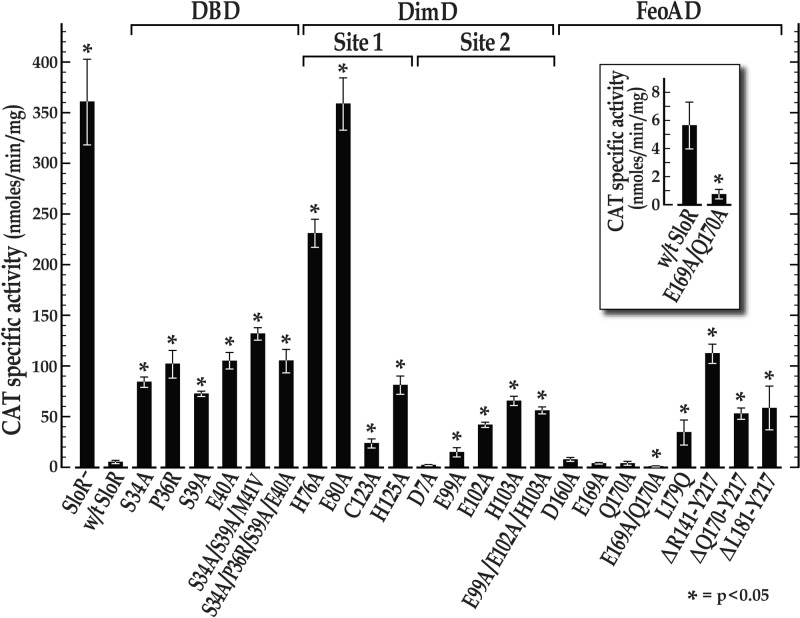Fig 3.
Effects of site-specific mutations in the predicted SloR DNA-binding domain (DBD), dimerization domain (DimD), and FeoA domain (FeoAD) on sloABC promoter activity. Shown are the results of CAT assays in the presence of wild-type SloR and its mutant variants expressed in trans. The means ± standard deviations (error bars) from each of three independent experiments, each performed in triplicate, are represented. All of the SloR variants with the exception of SloR(D7A), SloR(D160A), SloR(E169A), SloR(Q170A), and SloR(E169A/Q170A) were significantly compromised in their ability to repress sloABC promoter activity, as indicated by CAT activity that was significantly derepressed compared to that of wild-type (w/t) SloR (*, P < 0.05; Student's t test). Interestingly, the SloR(E169A/Q170A) variant was a significantly better repressor of sloABC promoter activity than wild-type SloR (*, P < 0.05; Student's t test) (see inset).

